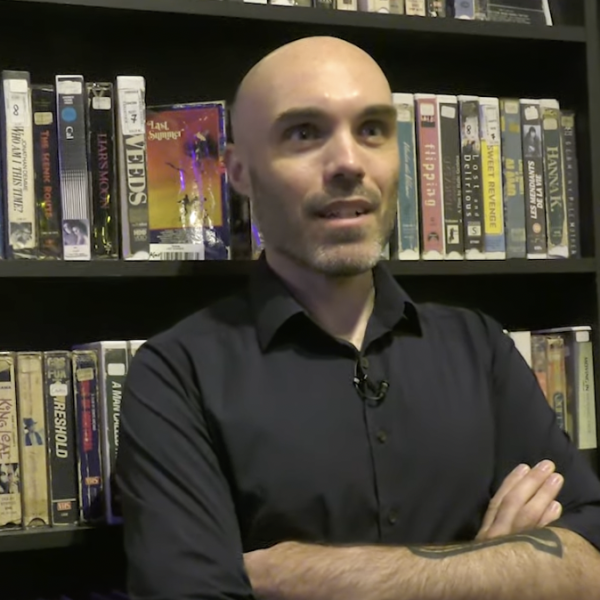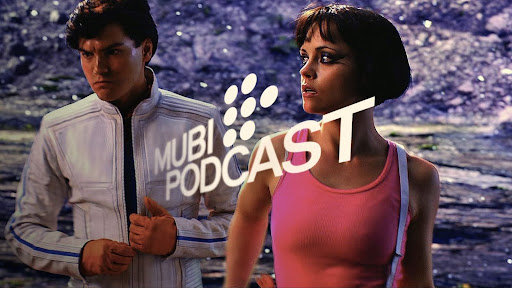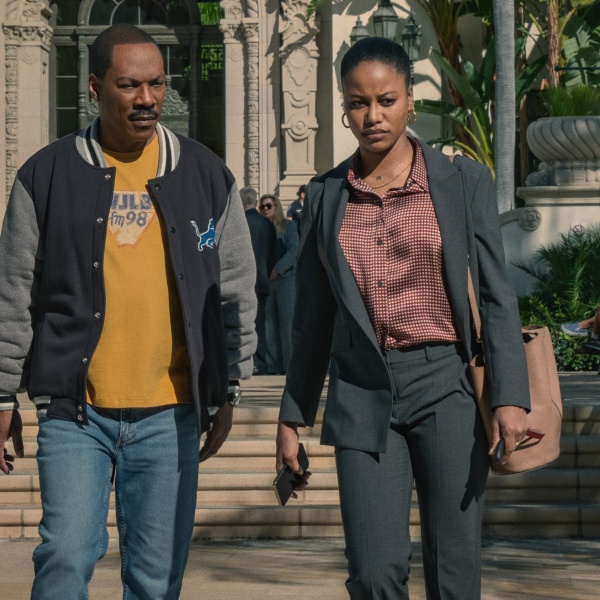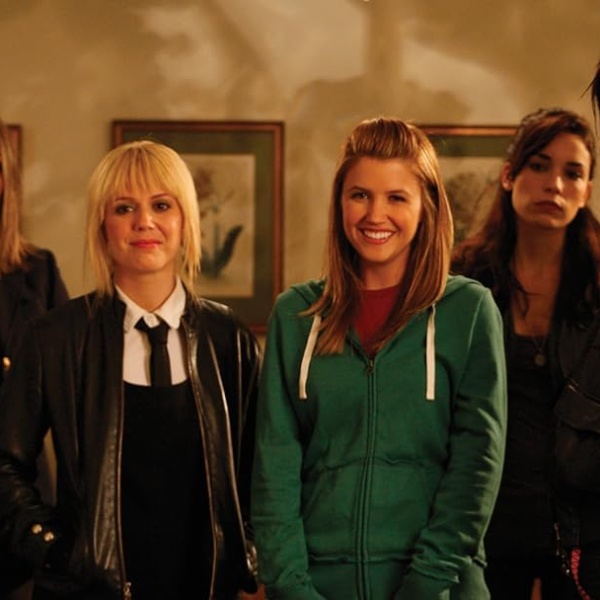
First, we’ll start you off with a warning: there are plenty of plot spoilers within, so if you haven’t seen the movies on this list you might want to do yourself a favor and watch them first before having some key scenes, and in some cases even the ending, ruined for you.
With that caveat out of the way, these are the scenes that won our admiration, gave us goosebumps, made us laugh, thrilled us beyond belief or moved us deeply. The Playlist writers are a chatty bunch and these are scenes that kept us talking around the water cooler while the editors yelled at us from their offices to get back to work. But really, these are the moments that remind us why we’ll sit through even the worst dreck sometimes. Even in films we may not have loved through and through, now and again everything aligns and a great idea or scene is executed with panache and skill and its in that transcendent moment that we forget where we are and we submit fully to a film. Obviously our picks are subjective, but these are the moments in 2010 that personally rocked our worlds.
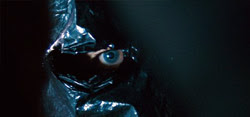 “Let Me In” – Scene: The Botched Murder
“Let Me In” – Scene: The Botched Murder
Even if you don’t believe that Matt Reeves‘ “Let Me In” surpasses the Swedish original (and this writer firmly believes that it does), it’s hard to argue that it’s more effective as a horror/thriller, and that’s demonstrated best in the writer/director’s major addition to the story — a brutal, botched murder sequence in a moving car. A creepily bag-headed Richard Jenkins (in one of the great unsung performances in the year) sneaks into the backseat of a car to enact his usual M.O. of finding blood for his young charge, but things swiftly go downhill when his target, a teenage boy, picks up a friend. Reeves’ command of the sequence’s suspense is positively Hitchcock-ian, culminating in an outstanding POV car crash and a gut-wrenching sacrifice.
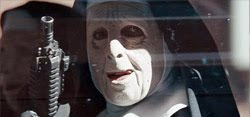 “The Town” – Scene: The Car Chase
“The Town” – Scene: The Car Chase
We’re still surprised that Ben Affleck has transformed into a director as capable as he is, and doubly surprised that a director as gifted at handling small performance moments could shoot action as well as he does in his heist thriller, “The Town.” Every heist and shoot-out is shot with an old-fashioned clarity that’s positively refreshing, perhaps best demonstrated in the car chase that follows the team’s second heist. It’s as tense and gripping as anything in the ‘Bourne‘ series, with Affleck showing a perfect sense of pace and geography, the latter in more ways than one — the tight Boston streets give it a claustrophobia that’s more or less unique in the genre.
 “Scott Pilgrim vs. the World” – Scene: The Vegan Police
“Scott Pilgrim vs. the World” – Scene: The Vegan Police
You knew who they were in high school or college, in fact, you might have even been one of them yourself. You could spot them a mile away, carefully reading the ingredients on packages of food or asking if the fries in the cafeteria were dunked in vegetable oil or something animal-based. Vegans. Everyone cared about animal rights around the time they became straight-edge too, but for most, eventually those things fade away right around the time the realization that trying to eat healthy as a vegan on a student budget is fairly impossible. And in just one of many, many great moments in Edgar Wright’s painfully ignored (at least by mainstream audiences) “Scott Pilgrim vs. the World,” the film sends up vegans in a great scene that lasts all of a few minutes. After spiking a cup coffee with half-and-half, Scott Pilgrim defeats evil ex number three Todd Ingram, only to have the hurt doubled with the Vegan Police — played awesomely by Thomas Jane and Clifton Collins Jr. in cameo roles — revoking Todd’s vegan powers, running down his list of infractions. We laughed. Hard. It’s an inspired little moment that, like the rest of the film, absolutely nails that certain pocket of indie rock-dom with ruthless perfection.
 “The Killer Inside Me“- Scene: The Ending
“The Killer Inside Me“- Scene: The Ending
A picture that’s been misread and misinterpreted ever since its debut at Sundance, “The Killer Inside Me” is the ultimate not-for-everyone film. Personally, we fell for it once Michael Winterbottom reaches the, frankly, batshit conclusion, in which the thin facade of Lou Ford’s sanity finally comes crumbling down in spectacular, and literal fashion. The director flirts with breaking the fourth wall in a way that had us gasping at his bravado, and as it all falls apart, the music cue that he cuts into — Spade Cooley and the Western Swing Dance Gang‘s “Shame On You” — should confirm to anyone who missed it, the strain of thick, dark humor that runs through the film.
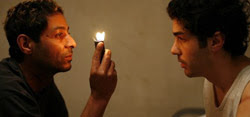 “A Prophet” – Scene: Razor Blade Killing
“A Prophet” – Scene: Razor Blade Killing
Just as the first life he takes, that of neighbor Reyeb, haunts protagonist Malik for years to come, the scene in which Malik kills him has followed us round ever since we saw Jacques Audiard‘s “A Prophet.” Wincingly hiding a razor blade in his mouth, Malik nervously flirts with his target, before making his move. Like most of the most indelible murders in screen history, things don’t quite go as planned, and the killing is botched, brutal and bloody. The contrast between the anti-hero’s reaction to it, and his later glee at the mayhem when he assassinates Corsican Mafia don Marcaggi is staggering.
 “Cyrus” – Scene: The Apology
“Cyrus” – Scene: The Apology
Many of the moments here are big, bravura sequences, but the Duplass Brothers‘ “Cyrus” is proof that tiny, quiet moments can be just as effective. For a film with the log line and cast of a big, broad, post-Apatow comedy, the commitment to truthfulness is absolute, as shown in the perfectly played moment at the end when the titular Cyrus (Jonah Hill) pays a visit to his mother’s ex-boyfriend (John C. Reilly) to apologize for sabotaging their relationship. The latter is initially furious, but he’s a decent man, and the compassion with which the two finally find common ground is a moment that’s stayed with us all year long. And who knew that Jonah Hill had a performance like this in him?
 “Inception” – Scene: The Spinning Top…
“Inception” – Scene: The Spinning Top…
This summer, Christopher Nolan made a splash by helming a film brimming over with what this writer has pretentiously referred to as “metaphysical red herrings.” While “Inception” makes many a curious foray into the philosophy governing the world Leonardo DiCaprio and his cohorts intend to infiltrate and loot, perhaps the most infuriating/satisfying piece of information comes at the very end of the picture. As DiCaprio takes reluctant steps toward his aged children, the camera slyly turns to a spinning top he put into motion seconds earlier on the edge of the table. Just as it begins to wobble (or does it?), we cut to black. The effect is two fold: an ingenious move on Nolan’s part which has inspired a flurry of debate that will likely stretch into the second decade of this century — and a reminder that in a film that questions reality throughout, nothing can be taken for granted. Not even happiness.
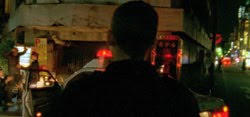 “Enter the Void” – Scene: The Opening Credits
“Enter the Void” – Scene: The Opening Credits
Please do not watch the following if you are prone to seizures. Once your eyesight adjusts and you gain a solid sense of your surroundings, join me in discussing the intro to Gaspar Noé’s typically divisive last effort. Before we ever get a sense of the other tricks up the film’s sleeves, Noé seemingly wants us to be assaulted and uncomfortable, but unwilling to look away all the same. The bass is unrelenting and while you get a sense of the many people who contributed to the film, the opening credits have little to do with that piece of business. Instead, what we have here is an absolute desire to communicate in the most eyeball-raping sense possible — and a high that the contemplative, overlong and occasional majestic film never quite scales over.
 “Monsters” – Scene: The Alien Sex
“Monsters” – Scene: The Alien Sex
It’s not surprising, considering that the film cost a mere six figure sum, but Gareth Edwards‘ “Monsters” doesn’t contain a huge amount of, well, monsters. What you do see are glimpses or remains, and for the most part we’re spending time with our two leads. But then we hit the end, where a fairly killer suspense sequence in an abandoned gas station turns into something entirely unexpected — what seems to be a full on mating session between two of the titular giant squid beasts. It’s a deeply strange moment, but a quietly beautiful, almost spiritual one, as the fledgling central couple look on at the unfathomable creatures from another world.
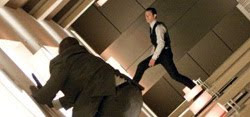 “Inception” – Scene: Zero-Gravity Hallway Fight
“Inception” – Scene: Zero-Gravity Hallway Fight
Joseph Gordon-Levitt may not scream action hero, but that doesn’t keep the hotel fight sequence from “Inception” from being the best fight scene in 2010. It’s a jaw-dropper and head-scratcher all at once, the rare set piece where form follows function, and both somehow end up winners. Set to Hans Zimmer‘s ever-escalating score, the scene cuts between the careening van in the first level of the dream and the subsequent loss of gravity in the second level, causing Gordon-Levitt’s Arthur and an unnamed assailant to battle their way across the floor, walls, and ceiling with moves that are somehow both brutal and balletic. When the van finally–and miraculously–rights itself, Arthur manages to emerge victorious, and gleeful van-crash survivor Dileep Rao asks, “Did you see that?” We couldn’t possibly have been looking anywhere else.
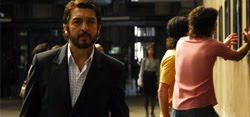 “The Secret in Their Eyes” – Scene: The One-Take Stadium Shot
“The Secret in Their Eyes” – Scene: The One-Take Stadium Shot
For the first half, Argentinean thriller “The Secret in Their Eyes” is a decent, solid procedural, but not a particularly remarkable one. But the film kicks it up a notch in its second hour, as it becomes clear from one key sequence, a sequence that Brian De Palma must be having kittens over. Chasing the suspect in the central murder, our two heroes, Benjamin Esposito and Ricardo Morales, are hoping to find him at a soccer game. The camera goes from a helicopter shot above the stadium, swoops into the stands to find the two agents, follows them through the crowd to their quarry, tracks them as they pursue him through the tunnels and finally they corner him on the pitch. All. In. One. Shot. It’s a truly bravura piece of filmmaking from director Juan José Campanella, but it’s firmly in service to the story, and signals that the film is shifting up a gear, into the moving, compelling thriller that it’s going to become.
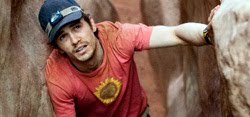 “127 Hours” – Scene: The Rescue Conclusion
“127 Hours” – Scene: The Rescue Conclusion
We weren’t all as enamored of Danny Boyle‘s “127 Hours” as our early reviews from Toronto — James Franco‘s performance is undeniably superb, but the director’s stylistic tics sometimes threaten to overwhelm the story. Nevertheless, it’s a mostly strong piece of work that occasionally reaches transcendent moments, none more so than when Aron Ralston, freed of his entrapment, and a limb, finally makes his break for freedom. As he hallucinate-daydreams of the family he’s taken for granted, and the family that he’ll one day have, Boyle’s picture manages to connect in a way that it hasn’t quite for the rest of the running time, aided by Sigur Rós‘ majestic “Festival.” It’s a heart-swelling — humanistically radiant and hopeful — moment that only the stone-hearted could fail to be moved by, and one of the most memorable moments of 2010.
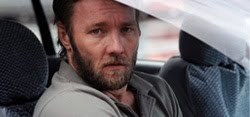 “Animal Kingdom” – Scene: The Death of Barry Brown
“Animal Kingdom” – Scene: The Death of Barry Brown
This Australian crime thriller is one of the best of its kind in years largely because you have no idea where it’s going to go next. The film starts with an overdose and ends with a bullet through someone’s head and, in between, the family getting the screws turned on them buck and fight against the system that is pining to put them in prison. The shocks come out of left field throughout the film, but none are bigger than the death of Barry Brown (Joel Edgerton), the rock of the family. Director David Michôd seemingly sets him up as the central focus of the film but in a truly shocking narrative twist, it’s barely half an hour into the film when the cops pull up, throw a gun in his lap, and kill him. The brazen murder sets up for a streak of corruption that we’ll see emerge on both sides of the law, leaving us just as uncertain where to place our loyalties, just like J. (James Frecheville), as he tries to place himself in the slowly collapsing world around him.
 “Dogtooth” – Scene: “The Dance Sequence”
“Dogtooth” – Scene: “The Dance Sequence”
It was impossible to avoid discussing nearly every damned moment in “Dogtooth” since every five minutes, there’s a genuine shocker. Though we’d be hard-pressed to forget the dance sequence that showcases exactly what these girls would consider artistic inspiration. Kept away from an outside world of any consequence, two daughters perform for their parents, but no one knows that one of them has secretly been mining popular VHS tapes, as her atonal dance routine begins to suspiciously resemble a certain Bruckheimer-produced Jennifer Beals dance movie. What follows is the most delirious in-film homage of the year, as “Dogtooth” cements itself as a fascinating picture, but also a genuinely hysterical, unhinged viewing experience.
 “I Am Love” – Scene: Closing Sequence/Sex Scene
“I Am Love” – Scene: Closing Sequence/Sex Scene
Despite its modern trappings, in many ways, “I Am Love” is a throwback to the grand, sweeping Technicolor epics of yore. It chronicles the shifting politics and personalities of a well-to-do Italian family with a decidedly contemporary twist. Enter Tilda Swinton, playing a Russian ex-pat whose personality is lost among her new, large Italian family but she finds solace in the arms (and food) of a chef, a friend of her son’s. The sensuous and the sensual finally meet in a back-to-nature sex scene set to strings that keep threatening to reach their crescendo. It’s a wonder of editing, as the scene cuts between close shots of the couple’s sweaty bodies and the flora and fauna surrounding them. Fast-forward to the film’s climax when she finally chooses love (and herself) and races through the mansion to gather her things with John Adams‘ “Harmonielehre: Part III – Meister Eckhardt and Quackie” rising in the background and we couldn’t contain ourselves. With emotion writ large on Swinton’s face, the scene is a tour-de-force, sans dialogue with the tears, shock, outrage and quiet support from those around her. Breathless and beautiful, this needed no words to devastate.
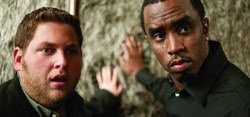 “Get Him to the Greek” – Scene: “Stroke the Furry Walls”
“Get Him to the Greek” – Scene: “Stroke the Furry Walls”
The Nicolas Stoller-directed, Judd Apatow-produced comedy — the gang’s first sequel, though it’s a bit of a sideways one — is not great, and it’s not that bad either. A diverting little comedy that has its moments when tracking the un-sobriety and unraveling of rock star Aldous Snow (Russell Brand, reprising his role from the better Stoller/Apatow laffer “Forgetting Sarah Marshall“). While the last act falls apart badly, what is inspired and works like a hurricane of laughter is the Werewolf/furry wall sequence with P. Diddy, who is the shining light of the picture and steals every scene he’s in. Essentially, Snow reunites with his horrible father (Colm Meaney), which triggers a night of Bacchanalia so intense it brings out “The Jeffrey” — a 9/11 of joints laced with everything imaginable that makes everyone fly off their rocker. Insanity ensues and a balls-high Jonah Hill and P. Diddy can only find comfort in stroking a gaudy wall with fur, which Diddy then proclaims he will cover his entire house in until it looks like a werewolf. Perhaps you had to be there, but in an uneven, sometimes frustratingly so picture, this scene of mayhem is utterly sidesplitting and one of the funniest moments of 2010 in film. It also spawned the song, “Furry Walls,” which features some great advice: “when the world slips you a Jeffrey, stroke the furry walls.” Amen.
 “The Social Network” – Scene: The Opening Sequence
“The Social Network” – Scene: The Opening Sequence
Much has been said about the opening sequence to David Fincher’s “The Social Network” and the fast and furious dialogue-heavy scene is as rapid-fire as Howard Hawks’ “His Girl Friday.” Tremendously engaging — what a bold way to start a film — the lead Jesse Eisenberg and his girlfriend Rooney Mara bicker in a ratatat relationship tête-à-tête that ends with the female dumping her obnoxious and ping-pong-conversating, hyper-intelligent boyfriend. But perhaps the genius of this sequence is how it launches the creation of FaceMash — Jesse Eisenberg’s Mark Zuckerberg character bitterly blogging and creating a website that ranks the hotness of Harvard campus girls while getting drunk — all set to Trent Reznor and Atticus Ross’ throbbing techno track “In Motion.” While not all of us can agree on the film, we sure as shit tip our cap to the confluence of cinematic elements that can make typing on a computer seem like the most riveting thing you’ll see on cinema all year (btw, written by the writer who called this film overrated, yes, there’s still lots to admire here).
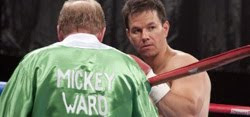 “The Fighter” – Scene: The Sanchez Fight
“The Fighter” – Scene: The Sanchez Fight
David O. Russell’s comeback film is so lively, so humorous and so light on its feet and yet, one of its most engrossing moments is also its most tense. While it’s hard to pick one sequence, the ending will make you want to stand up and cheer and the cat fight with Amy Adams‘ character makes you want to egg her on and scream “throttle that bitch!”, but perhaps the finest moment in the film is the Sanchez fight. Beaten, humiliated and bloody, this is Mark Wahlberg’s character’s last fight if he goes down. His trainer brother Dicky (Christian Bale) meanwhile is locked up and has to hear about the fight as it’s happening from his bouffant-haired mother (Melissa Leo) over the phone. The fight is going terribly, Mickey is being throttled, but he’s wearing down Sanchez just like Dicky told him to do and mother and son’s back and forth acts as the new commentary to a will-he or won’t-he fight back scenario. When Mickey finally pounces out of nowhere and the family ecstatically celebrates, there’s probably nothing more satisfying all year.
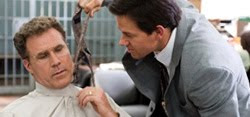 “The Other Guys” – Scene: “Tuna vs. Lion”/”Soup Kitchen”
“The Other Guys” – Scene: “Tuna vs. Lion”/”Soup Kitchen”
It must be said, while most of laughed with, but semi-dismissed Adam McKay’s “The Other Guys” — and yes, it’s overrated compared to some of the funnier R-rated comedies this year that got the shaft from audiences — the comedy, like most of his films, has an extremely high repeat viewing value. Most of McKay’s films get better upon multiple viewing and “The Other Guys,” while grossly uneven, is no different. The “Tuna vs. Lion” scene — a ridiculously funny improv riff between Will Ferrell and Mark Wahlberg is hilarious, but it even pales in comparison to Rob Huebel’s scene-stealing turn as a fellow officer who describes what a “soup kitchen” is (homeless person’s orgy). Both perhaps are not even as good as Micheal Keaton’s character’s consistent references to TLC songs. Oh and there’s Wahlberg’s character’s obsession with Ferrell’s wife Eva Mendes… Yeah, it doesn’t add up to that much, but the moments themselves are too rich.
 “Biutiful” – Scene: The Birds
“Biutiful” – Scene: The Birds
Yes, Alejandro González Iñárritu’s “gloomy” drama is hard to watch because it’s a slow-motion death knell for a dying man desperately trying to get his life in order before he passes on into the next. But it’s also a powerful and arresting portrait of the human spirit and yet another Iñárritu document of living through suffering. A quiet moment is perhaps the most striking. A lost, at his very bottom Uxbal (a tremendous Javier Bardem) wanders the streets after he’s learned he’s responsible for the deaths of dozens of Chinese migrant workers. He stands on a bridge staring out in the night at the nothing. A random flock of birds flies by zipping around and the camera leaves Bardem, perfectly capturing their random ballet in the sky. Did that actually happen when they were filming? Is this a well-planned out moment of CGI genius to create a moving epiphany? It’s hard to say, but it is certainly a transcendent moment and one so inspired it became the film’s poster.
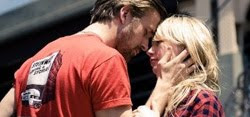 “Blue Valentine” – Scene: Conclusion Segueing Into Credits
“Blue Valentine” – Scene: Conclusion Segueing Into Credits
Is there any more crushing, devastating, wonderful and awe-inspiring credits sequence this year than the ending of “Blue Valentine”? In the toxic relationship drama, by the end, the marriage between Michelle Williams and Ryan Gosling’s characters has crumbled beyond repair. He knows this is the end, he walks away weeping, his little girl chasing after him. It’s heartbreaking. Before any final conclusion is drawn, the screen bursts open with fireworks that dissolve open into title cards for each actor set to the strains of Grizzly Bear. It’s a tremendous transition that leaves you with an astounding feeling. One, we might add, that’s uplifting and leaves you walking away feeling hopeful rather than completely destroyed. And yet the effect is not at all cheap.
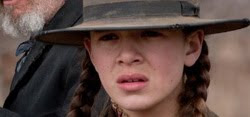 “True Grit” – The Scene: River Crossing
“True Grit” – The Scene: River Crossing
The poetry of the salt-of-the-earth language of “True Grit” is the real star of the Coen Brothers drama which provides laughs, sass and gravity, yet the film’s greatest moment may be one that’s completely wordless. Jeff Bridges and Matt Damon’s Cogburn and LaBeouf cowboys have left little Mattie Ross (Hailee Steinfeld) behind so they can seek out her father’s killer without having to babysit. Unbowed, she jumps in the river with her horse, Little Blackie, and swims against the current to meet them. With Carter Burwell’s score swelling just to the right notes, it’s perhaps the fiercest and most unwavering display of determination you’ll see on screen all year. True Grit, indeed.
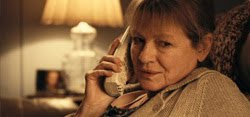 “Rabbit Hole” – Scene: “Does It Ever Go Away?”
“Rabbit Hole” – Scene: “Does It Ever Go Away?”
A grieving Nicole Kidman talks to her sage old mother (an excellent Dianne Wiest). While generally estranged, the women have one connection almost stronger than blood. They’ve both had children pass on before them. Kidman asks in a quivering voice, “does it ever go away,” meaning all the pain, suffering, anguish and self-loathing she feels. Her mother doesn’t skip a beat. “No,” she said with a sympathetic smile. “But at some point it does become bearable.” It’s a crushing scene that’s both hopeful and devastating. And all it is is strong dialogue, two wonderful actors and a camera quietly sitting in the background soaking it all in.
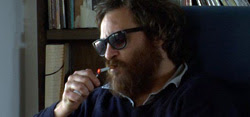 “I’m Still Here” – Scene: The Amazon Water Walk
“I’m Still Here” – Scene: The Amazon Water Walk
Casey Affleck’s been watching Werner Herrzog films. And while Herzog bored us all to tears with his ponderous, but not particularly affecting documentary, “Cave of Forgotten Dreams,” Affleck took an ecstatic truth moment right out of Herzog’s playbook for the end of his brilliant ruse of a documentary, “I’m Still Here” about Joaquin Phoenix’s fabricated and immersing meltdown. In the doc, Phoenix has reached his lowest point so he goes back to visit his father in Panama. Sick of it all, he dives into a river and wades through the water while a beautiful, elegiac orchestration builds. Phoenix walks and walks through the water, possibly going on the road to nowhere, but the camera quietly follows for what seems like an intimate 20 minutes, finally cutting to black and leaving us wondering what we just witnessed.
 “Black Swan” – Scene: Nina Shows Us Her Wings
“Black Swan” – Scene: Nina Shows Us Her Wings
Among other things, Darren Aronofsky’s “Black Swan” is filled with innumerable technical flourishes, which are at least partially concealed by Matthew Libatique’s cinéma vérité-style cinematography. Every time one of these moments occurs, like watching the feathers flutter underneath Natalie’s skin during her hot make out session with Mila Kunis, you’re caught off guard, because none of the shots or scenarios are set up for visual effects wizardry. The most shocking, most jaw-dropping, most gorgeous visual effects moment, and one of the great moments of film all year, occurs during the finale, when Natalie’s unhinged ballerina imagines herself growing wings as she twirls on stage. Like the rest of the movie, it’s subtle, startling, and very, very cool. It’s a shot with wings that really lets you soar.
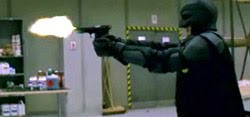 “Kick-Ass” – Scene: The Warehouse Assault/The Death of Big Daddy
“Kick-Ass” – Scene: The Warehouse Assault/The Death of Big Daddy
Our reactions to “Kick-Ass” have ranged from mildly animated to positively thrilled, and much of that pleasure-center tickling movie joy is served up by Nicolas Cage’s controlled, yet delightfully unhinged performance. As Big Daddy, the stern cop-turned-assassin training Chloe Moretz’s Hit Girl to slaughter criminals both indiscriminately and stylishly, he is electrifying and looms large over two of the best scenes in the film. The first, arguably the most hardened action sequence in the film, involves Big Daddy descending like a bulletproof maelstrom on a group of unfortunate gangsters. As he cuts and shoots through the swath of thugs like a man possessed, the pulsing and ascending score (recycling John Murphy‘s glorious “28 Days Later” music – a lot of “Sunshine” is utilized too) and astounding choreography by Brad Allan (who also contributed to ‘Scott Pilgrim‘) makes the scene instantly rewatchable and jaw-droopingly cool. A later scene and the untimely end of Big Daddy is a visual treat with Hit Girl’s attempted rescue of her father as a first-person shooter. What makes the scene more than the blood and bullets is the tender relationship communicated between Big Daddy and Hit Girl, even as the former is set ablaze. Over the top? Yes. Memorable? Absolutely.
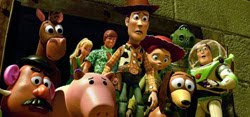 “Toy Story 3” – Scene: The Toys Embrace Death
“Toy Story 3” – Scene: The Toys Embrace Death
Yes, we had “Toy Story 3” on yesterday’s overrated list, doesn’t mean we didn’t like it and or its scenes, it’s just overall, people flipped for it and as many have already noted, it’s not even as good as “Toy Story” and “Toy Story 2,” so get over it already. Anyhow, even if you’re one of those poor unfortunates who has not yet been witness to the holy grail of storytelling that is “Toy Story 3”, this scene has gotten enough press coverage to catch even a casual filmgoer’s eye. We must be frugal in describing the circumstances that cause our heroes to end up on a conveyor belt en route to a hellishly fire-belching incinerator with seemingly no way out. The scene that follows transcends the film’s cartoonish trappings and asks a critical and terrifying question – under what circumstances can we accept death? It’s heady stuff and moving too, understandably brief but downright astounding for such a crowd-pleaser.
Obviously this is just a small smattering of the best moments on screen in 2010 that we feel strongly about. We could probably go on and on all day, but we have to end somewhere. You probably have your own and that’s what the comments section is for. – Oliver Lyttelton, Drew Taylor, Gabe Toro, Chris Bell, Kevin Jagernauth, Kimber Myers, and Mark Zhuravsky.
